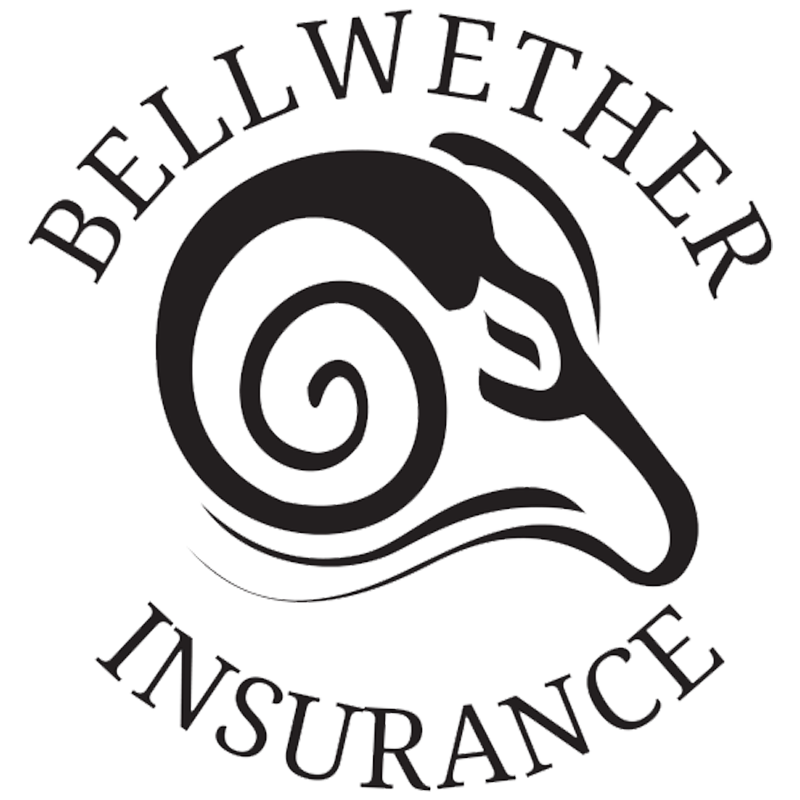Ohio Cardiology Business Insurance

Index
Contact Us
Phone
216-600-2828
Location
100 N. Center Street PO Box 627 LaGrange, OH 44050
Operating a cardiology practice in Ohio requires not only expertise in medical care but also a solid understanding of the business side of things, including insurance.
business insurance is crucial for protecting your practice from unforeseen risks and liabilities. This article will delve into the various aspects of cardiology business insurance in Ohio, providing you with essential information to safeguard your practice.
Understanding Business Insurance for Cardiology Practices
Business insurance is a broad term that encompasses various types of coverage designed to protect businesses from financial losses. For cardiology practices, this insurance is particularly vital due to the unique risks associated with providing specialized medical services. The stakes are high in cardiology, where the health and well-being of patients are paramount, and any mishap can lead to significant financial and reputational consequences.
Types of Insurance Coverage
There are several types of insurance that cardiology practices should consider. Each type serves a specific purpose, ensuring comprehensive protection against various risks. Understanding these different types can empower practice owners to make informed decisions about their coverage needs.
- General Liability Insurance: This coverage protects against claims of bodily injury, property damage, and personal injury. For example, if a patient slips and falls in your office, this insurance can cover the associated legal costs. It also extends to cover incidents that occur off-site, such as during community health events or outreach programs.
- Professional Liability Insurance: Also known as malpractice insurance, this is crucial for any medical practice. It protects against claims of negligence or inadequate care, which can be particularly significant in a specialized field like cardiology. Given the complexity of cardiac conditions, even minor errors in diagnosis or treatment can lead to serious repercussions, making this coverage essential.
- Property Insurance: This covers damage to your practice's physical assets, such as equipment and office space, due to incidents like fire, theft, or vandalism. In cardiology, where sophisticated diagnostic and treatment equipment is essential, ensuring that these assets are protected is critical to maintaining operational continuity.
The Importance of Tailored Coverage
Every cardiology practice is unique, and so are its insurance needs. Tailored coverage ensures that specific risks associated with your practice are adequately addressed. For instance, if your practice uses advanced medical technology, you may need additional coverage for equipment breakdowns. This is particularly important as the cost of replacing or repairing high-tech medical devices can be exorbitant, and downtime can severely impact patient care.
Consulting with an insurance broker who understands the nuances of healthcare can help in selecting the right policies. They can assist in identifying potential gaps in coverage and recommend solutions tailored to your practice's needs. Additionally, brokers can provide insights into emerging trends in healthcare liability and risk management, ensuring that your practice remains compliant with evolving regulations while safeguarding against unforeseen challenges. By staying informed and proactive, cardiology practices can enhance their resilience against the financial impacts of potential risks.

Key Considerations When Choosing Insurance
Selecting the right insurance for a cardiology practice involves careful consideration of several factors. Each aspect can significantly impact the overall protection of the practice.
Assessing Risks
Understanding the specific risks associated with your cardiology practice is the first step in choosing the right insurance. Risks can vary based on the services offered, the size of the practice, and the patient demographic. For instance, a practice that performs invasive procedures may face higher liability risks than one that focuses solely on consultations.
Conducting a thorough risk assessment can help identify potential vulnerabilities. This assessment should include evaluating the physical environment, staff qualifications, and the types of procedures performed. Additionally, it may be beneficial to analyze historical data on patient outcomes and any previous claims made against the practice. Engaging with risk management consultants can provide deeper insights and strategies to mitigate identified risks, ultimately leading to a more informed insurance selection process.
Evaluating Coverage Limits
Coverage limits refer to the maximum amount an insurance policy will pay for a covered loss. For cardiology practices, it's essential to choose limits that adequately reflect the potential risks involved. Insufficient coverage can lead to significant out-of-pocket expenses in the event of a claim.
Consider factors such as the size of your practice, the number of patients seen, and the complexity of procedures performed when determining appropriate coverage limits. Additionally, reviewing these limits regularly can ensure they remain aligned with the growth and changes in your practice. It may also be wise to consult with peers or industry associations to benchmark coverage limits against similar practices, ensuring that you are not underinsured in a rapidly evolving healthcare landscape.
Understanding Policy Exclusions
Every insurance policy comes with exclusions, which are specific situations or conditions that are not covered. Understanding these exclusions is crucial to avoid surprises during a claim. For instance, some policies may not cover claims related to certain procedures or may have limitations for specific types of equipment.
Carefully reviewing the policy documents and discussing any unclear terms with your insurance broker can help clarify what is and isn't covered. This knowledge can be instrumental in making informed decisions about additional coverage options if necessary. Furthermore, staying informed about changes in regulations and standards of care in cardiology may reveal new exclusions or requirements that could affect your coverage. Regularly attending industry seminars or workshops can enhance your understanding of these nuances, ensuring that your practice remains adequately protected against emerging risks.
Cost Factors in Cardiology Business Insurance
The cost of business insurance can vary significantly based on several factors. Understanding these elements can help cardiology practices budget effectively for their insurance needs.
Location and Practice Size
The geographical location of your practice can influence insurance premiums. Areas with higher rates of claims or litigation may have higher insurance costs. Additionally, the size of the practice, including the number of employees and the volume of patients, can also affect pricing.
For example, a larger practice with multiple cardiologists may face different risks compared to a solo practitioner, leading to variations in premium costs. Urban practices might encounter unique challenges such as increased competition and higher patient expectations, which can also contribute to the complexity of insurance needs. Conversely, rural practices may benefit from lower premiums but could face challenges related to limited access to specialized care and resources, potentially impacting their risk profile.
Claims History
Your practice's claims history plays a significant role in determining insurance costs. A history of frequent claims may result in higher premiums, as insurers view this as a higher risk. Conversely, a clean claims history can lead to lower rates and potential discounts.
Implementing risk management strategies, such as staff training and proper documentation, can help reduce the likelihood of claims and, in turn, lower insurance costs. Furthermore, establishing a culture of safety within the practice, where team members are encouraged to report near misses and potential hazards, can significantly mitigate risks. Regular audits and assessments of clinical practices can also ensure adherence to the highest standards of care, further protecting the practice from potential liabilities.
Insurance Market Trends
The insurance market is influenced by various external factors, including economic conditions, regulatory changes, and industry trends. These factors can impact the availability and pricing of insurance products for cardiology practices.
Staying informed about market trends can help practices make timely decisions regarding their insurance needs. Engaging with industry associations or attending relevant conferences can provide valuable insights into current market dynamics. Additionally, understanding the implications of new healthcare legislation or changes in reimbursement models can help practices anticipate shifts in their insurance requirements. Networking with peers and sharing experiences can also lead to better-informed decisions, as practices learn from each other's successes and challenges in navigating the complex landscape of business insurance.
Finding the Right Insurance Provider
Choosing the right insurance provider is just as important as selecting the appropriate coverage. A reliable provider can make a significant difference in the claims process and overall service quality. The right insurer not only protects your practice but also supports your patients' needs, ensuring that they receive the best possible care without unnecessary financial burdens.
Researching Insurance Companies
Start by researching insurance companies that specialize in healthcare or, more specifically, cardiology practices. Look for providers with a strong reputation for customer service and claims handling. Online reviews, testimonials, and ratings from industry organizations can provide valuable insights. Additionally, you may want to explore the financial stability of potential insurers, as a financially sound company is more likely to honor claims and provide consistent service over time.
Additionally, consider reaching out to other cardiology practices for recommendations. Peer feedback can help identify insurers that are well-regarded within the medical community. Networking through professional associations or attending industry conferences can also yield valuable contacts and insights into which providers have a proven track record in the cardiology field.
Evaluating Customer Service
Customer service is a critical factor when selecting an insurance provider. Look for companies that offer responsive support and clear communication. A provider that is easy to reach and willing to answer questions can make the insurance process smoother. It’s essential to assess how they handle inquiries and whether they provide educational resources to help you understand your policy and coverage options.
Consider requesting quotes and evaluating how promptly and thoroughly potential insurers respond. This initial interaction can be indicative of the level of service you can expect throughout your relationship with the provider. Moreover, inquire about the availability of dedicated account managers or support teams who specialize in healthcare, as having a knowledgeable contact can significantly enhance your experience and ensure that your specific needs are met efficiently.
Reviewing Policy Options and Flexibility
When evaluating insurance providers, consider the range of policy options they offer. A provider that offers flexibility in coverage can better accommodate the unique needs of your cardiology practice. This includes understanding the nuances of cardiology-related risks and ensuring that your policy adequately covers specialized equipment and procedures.
Look for insurers that allow customization of policies, enabling you to add or modify coverage as your practice evolves. This adaptability can be crucial in ensuring that your insurance remains relevant and effective over time. Additionally, explore whether the provider offers bundled services or discounts for multiple policies, which can lead to cost savings while ensuring comprehensive coverage for your practice's diverse needs.
Regulatory Considerations for Cardiology Practices
Cardiology practices in Ohio must navigate various regulatory requirements that can impact their insurance needs. Understanding these regulations is essential for compliance and risk management.
State Regulations
Ohio has specific regulations governing medical practices, including requirements for malpractice insurance. Familiarizing yourself with these regulations is crucial to ensure compliance and avoid potential penalties.
Consulting with legal experts or industry associations can provide clarity on the specific requirements for cardiology practices in Ohio. Staying informed about any changes in regulations can also help practices adapt their insurance strategies accordingly. Additionally, Ohio's regulations may include stipulations regarding the handling of controlled substances, which are particularly relevant for cardiologists who prescribe medications for heart-related conditions. Ensuring that your practice adheres to these guidelines not only protects your patients but also safeguards your practice from potential legal issues.
Federal Regulations
In addition to state regulations, federal laws such as the Health Insurance Portability and Accountability Act (HIPAA) impose requirements on healthcare providers regarding patient data protection. Failure to comply with these regulations can lead to significant fines and legal repercussions.
Insurance policies that include coverage for regulatory fines or legal defense can be beneficial in mitigating these risks. Understanding the intersection of insurance and regulatory compliance is essential for protecting your practice. Moreover, the Centers for Medicare & Medicaid Services (CMS) also set forth regulations that cardiology practices must follow, particularly if they participate in federal healthcare programs. These regulations can involve quality reporting measures and adherence to specific billing codes, which can significantly impact reimbursement rates. Therefore, staying abreast of both HIPAA and CMS guidelines is critical for ensuring not only compliance but also the financial viability of your practice.
Risk Management Strategies for Cardiology Practices
Implementing effective risk management strategies can help cardiology practices minimize their exposure to potential claims and losses. These strategies not only enhance patient safety but also contribute to lowering insurance costs.
Staff Training and Education
Regular training and education for staff members are vital in maintaining high standards of care and minimizing errors. Training programs should cover topics such as patient communication, emergency procedures, and documentation practices.
Encouraging a culture of safety and accountability within the practice can also empower staff to identify and address potential risks proactively. This approach can lead to improved patient outcomes and reduced liability exposure. Additionally, incorporating simulation-based training can provide staff with hands-on experience in handling complex scenarios, such as cardiac emergencies, which can significantly enhance their confidence and competence in real-life situations.
Comprehensive Documentation
Thorough documentation is an essential aspect of risk management in medical practices. Accurate and detailed records can provide critical evidence in the event of a claim or dispute.
Implementing standardized documentation practices can help ensure consistency and completeness. Regular audits of documentation can also identify areas for improvement and enhance overall compliance. Furthermore, leveraging electronic health record (EHR) systems can streamline the documentation process, allowing for real-time updates and easier access to patient histories, which can be invaluable during treatment and in case of legal scrutiny.
Engaging in Quality Improvement Initiatives
Participating in quality improvement initiatives can help cardiology practices enhance patient care and reduce risks. These initiatives may involve implementing evidence-based protocols, conducting patient satisfaction surveys, and analyzing outcomes.
By continuously striving for improvement, practices can not only enhance their reputation but also demonstrate their commitment to high-quality care, which can be beneficial during insurance negotiations. Additionally, collaborating with other healthcare providers and organizations to share best practices and learn from each other’s experiences can foster a community of learning that drives innovation and enhances patient safety across the board. Regularly reviewing and updating protocols based on the latest research findings can also ensure that practices remain at the forefront of cardiology care, ultimately benefiting both patients and the practice itself.

Conclusion
Cardiology business insurance is a critical component of safeguarding a cardiology practice in Ohio. Understanding the various types of coverage, key considerations, and regulatory requirements is essential for making informed decisions. By implementing effective risk management strategies and selecting the right insurance provider, cardiology practices can protect themselves against potential liabilities and ensure long-term success.
As the healthcare landscape continues to evolve, staying informed about insurance trends and regulatory changes will be crucial. Engaging with industry professionals and continuously assessing the practice's needs can help ensure that your cardiology practice remains well-protected and prepared for the future.


